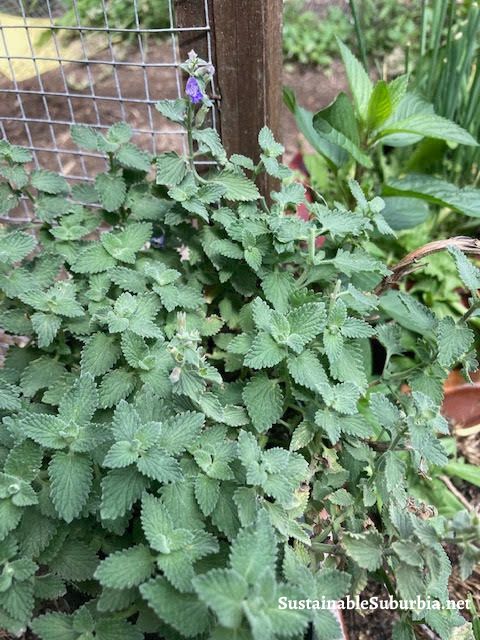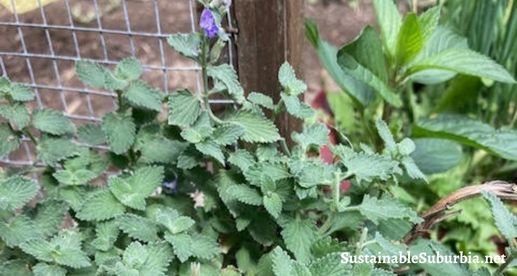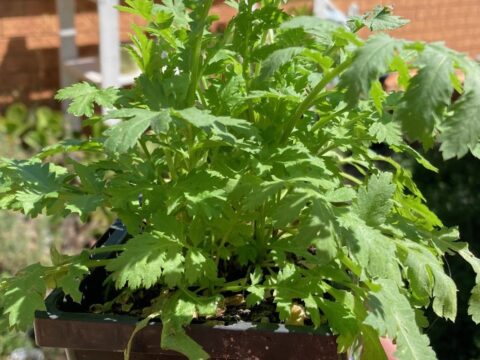Last updated on April 5th, 2023 at 12:33 pm
My daughter Elli, who is an absolute chicken whisperer, has been adding all sorts of herbs to our garden for the benefit of our chooks. Her favourite source for research is Keeping Poultry Naturally by Alanna Moore, (get it in Australia) who not only covers many helpful and healthy plants to grow for your chooks, but follows permaculture principles. So a new series for Sustainable Suburbia will be looking at some of the herbs we have added to our garden for the sake of the chooks.
Catnip is said to repel lice, rodents, and other pests, so growing it around your chook house or run has obvious benefits. Catnip is also known as catmint. It’s a pretty is a common herb which you probably know best for its effects on cats (it’s like pot for cats, or so I’m told. Out cat doesn’t seem interested!)
The scientific name for catnip is Nepeta cataria, and it’s part of the mint family. It’s native to Europe, North Africa and South West Asia, but it is now found in most parts of the world as a garden herb. It’s perennial, growing to about 100cm tall and has white, pink or purple flowers, which are attractive to bees. It can be grown from seed and like most mints will spread easily, so it is best to control its growth if you are planting it near your vegie garden. I quite like mint spreading around my chook run though.
Catnip contains thymol, which is an organic compound found in thyme, oregano and basil, and it is often used in medicines and antiseptics because of its antifungal and antiseptic properties. Thymol is known to fight off bacteria, viruses and fungi. Catnip oil is also a great way to repel lice, and it has been used for centuries as a natural insect repellent. It has been used to treat a variety of insect infestations, including fleas, mites and lice.

Catnip also contains nepetalactone, which is a volatile essential oil that is responsible for the sedative and calming effects it has on cats. This oil is also known to have an effect on other animals, including mice, and can be used to repel them.
Including catnip in a chicken run or herb garden is a great way to naturally repel lice, rodents, and other pests from the area. It is easy to grow, requiring little maintenance, and can be planted as part of a larger herb garden. It can also be used to naturally repel insects that may be attracted to the chickens’ food and water.
Catnip can be used in a variety of ways, such as adding it to the soil in the chicken run to keep rodents away, or adding it to their food to reduce the chances of them picking up lice. It can also be hung around the area as a natural insect repellent.
Catnip can also be used to create a natural pest control mixture, by mixing it with other herbs such as lavender, rosemary, and mint. This mixture can be sprinkled around the chook run or added to the nesting box. This will help to keep the chickens and their surroundings free from pests.
Catnip can also be used to create natural remedies for chickens. For example, it can be used to treat respiratory problems, or added to their water to help ease stress. It can also be used to treat skin irritations, such as feather mites, or added to your worming mix. It’s even thought to make chickens happier!
Useful resources
In addition to Alanna Moore’s Backyard Poultry Naturally, my go-to reference books are Jackie French’s The Chook Book and Backyard Self Sufficieny, Linda Woodrow’s The permaculture home garden (one of my all-time favourite books) and The Canberra Gardener.



